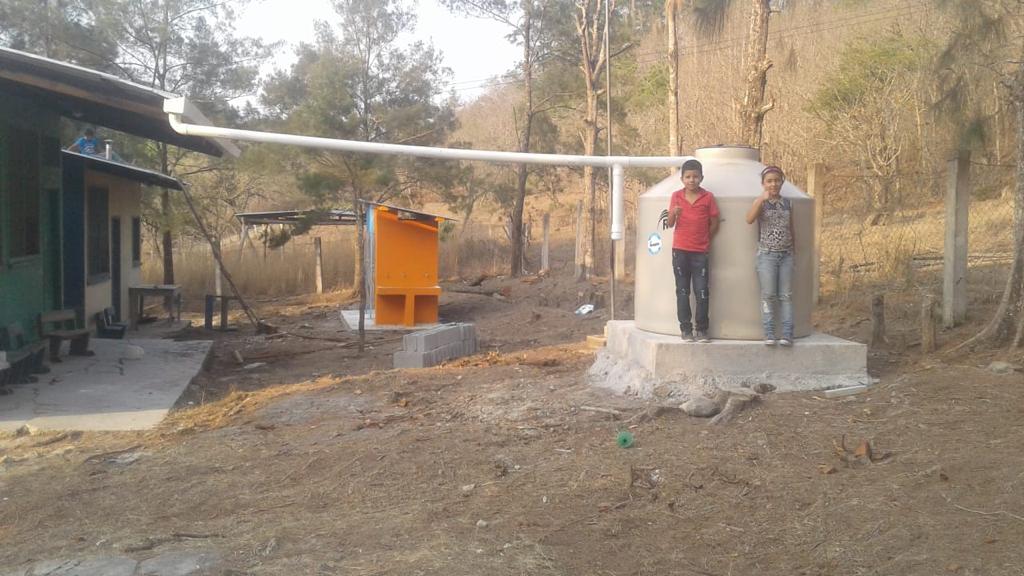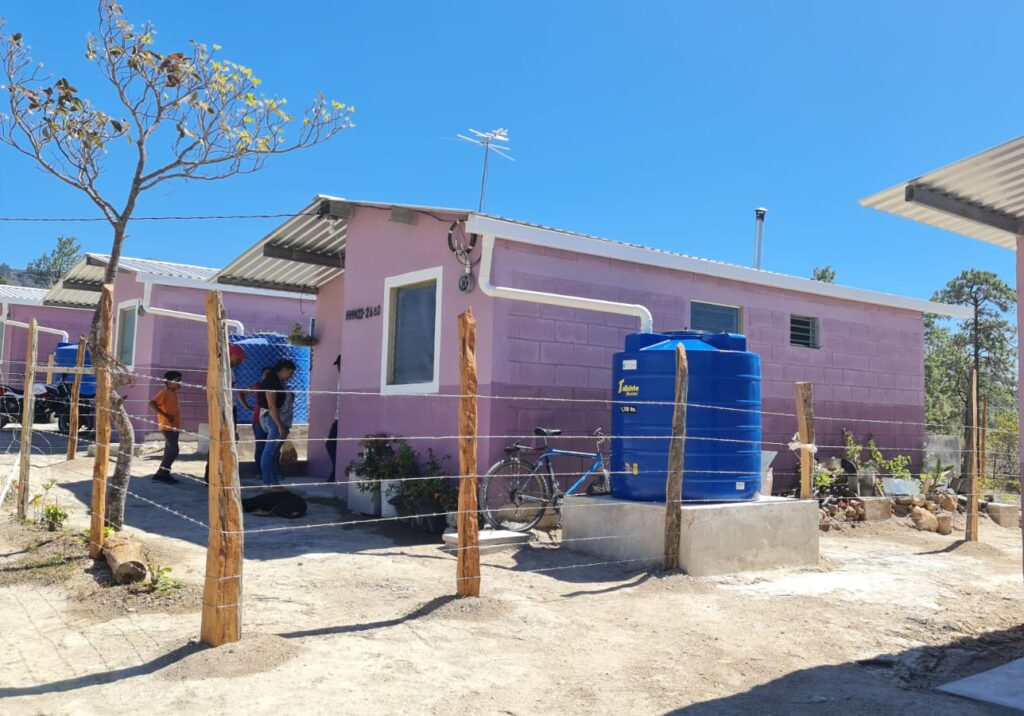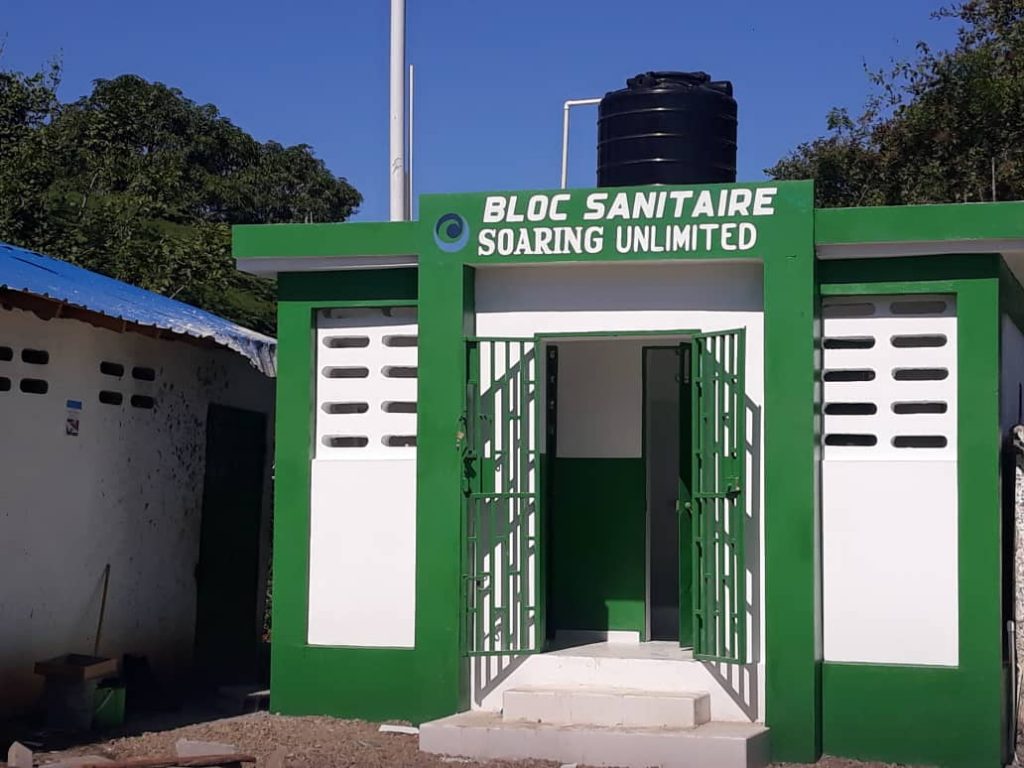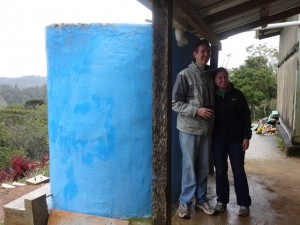 Pure Water for the World has been installing rainwater harvesting systems in rural communities since 2014. It is an important tool used to provide sustainable, reliable access to water in homes, schools, and healthcare facilities.
Pure Water for the World has been installing rainwater harvesting systems in rural communities since 2014. It is an important tool used to provide sustainable, reliable access to water in homes, schools, and healthcare facilities.
To learn more about our first RWH project in Honduras, constructed at a rural school in 2014, (photo right), click here.
PWW has installed 35 rainwater harvesting systems, to date, reaching homes, schools and healthcare facilities in Honduras and Haiti. As we work in more areas challenged by climate issues and water scarcity, it’s a critical tool we will continue to put to good use.
Following provides more information about this important technology (source: PWW partner, CAWST).
Rainwater Harvesting (RWH) is a water collection technology that offers flexibility and adaptability. It is used around the world, by the richest to the poorest communities and in the wettest to driest regions. While RWH may not be the definitive answer to all household water problems, there are several benefits of the technology that make it an option to be considered for domestic use in developing countries.
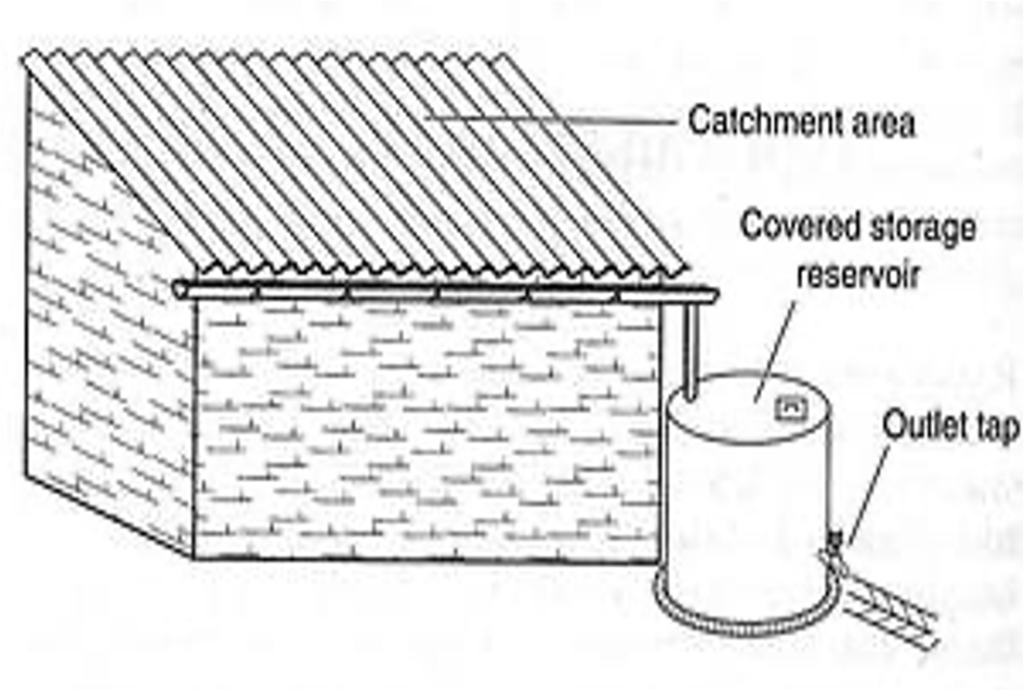 RWH is convenient in the sense that it can provide water at or near the point where water is needed or used, resulting in time savings, particularly for women and children who have to collect water from distant sources. It reduces or even eliminates the need for complex and costly water distribution systems.
RWH is convenient in the sense that it can provide water at or near the point where water is needed or used, resulting in time savings, particularly for women and children who have to collect water from distant sources. It reduces or even eliminates the need for complex and costly water distribution systems.- RWH can complement other water sources and utility systems, thus relieving pressure on limited water supplies.
- RWH provides a buffer for use in times of emergency or breakdown of the public water supply systems, particularly during natural disasters.
- People have full control of their own catchment systems, which greatly improves household water security and water conservation, while at the same time reducing operation and maintenance problems.
- Technology is based on traditional methods and relatively simple to construct, install and operate.
- RWH technologies are flexible and can be built to meet almost any requirements. It is relatively easy to reconfigure, expand, or in some cases, relocate systems.
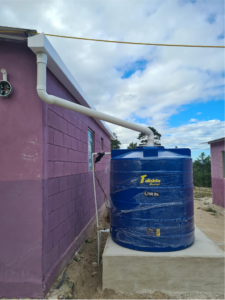 Rainwater is a free resource. While there are capital costs to construct and install a catchment system, households can save money over the long run since they don’t have to purchase water from private vendors or pay public utilities.
Rainwater is a free resource. While there are capital costs to construct and install a catchment system, households can save money over the long run since they don’t have to purchase water from private vendors or pay public utilities.
The primary disadvantages to RWH systems are:
- Seasonal nature and uncertainty of rainwater supply, depending on the region in the world.
- Capital costs required to construct and install a RWH system may still be high for the end users.
- Regular maintenance and cleaning is essential for successful operation.
At PWW, before installing a RWH system, we assess and calculate the area of catchment. For example, if the roof is in poor condition, determine if it needs to be replaced before the RWH system installation. We also take into consideration the number of people living in the house, attending the school, or visiting the healthcare facility that the system will serve, as well as the average precipitation in the area. We assess if it is possible to add another source of water to connect to the RWH tank, if needed.
PWW is planning to incorporate a calculating tool, similar to one (click here) designed for RWH in Mexico by Cantaro Azul, to support and enhance the technical analysis and basic calculations of RWH systems.
Below are a few examples of RWH systems PWW teams have installed in schools, homes and healthcare facilities:
